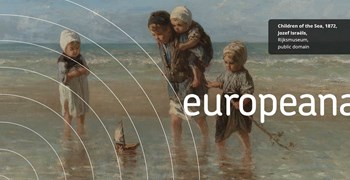Researching the fate of the Serbian WWI soldiers who died in the Netherlands
Guest blog by Fabian & Tatjana Vendrig (also available in Dutch and Serbian language version)
In a corner of the Dutch Reformed cemetery in Garderen, on the edge of the forested area of the Veluwe region in the Netherlands, stands a monument to the memory of Serbs who died of the Spanish flu in 1919, in the aftermath of the First World War. The monument contains 29 names of soldiers who died in Garderen, 21 soldiers who died in Nijmegen and 14 who died in Enschede, but whose coffins, as it was found out in 2012, are no longer in the Netherlands. A team consisting of two Dutch and one Serbian were determined to find out what happened to those Serbian soldiers who had died in the Netherlands, which was a neutral country during the First World War. They wanted to know how they arrived in the Netherlands, where their remains are now and if possible to find the families of those Serbian First World War soldiers.

Monument in Garderen for the Serbian WWI soldiers fallen in the Netherlands – Photo by Fabian Vendrig CC-BY-SA
After researching the Dutch municipal archives they discovered that not only had 64 Serbian soldiers died in three municipalities in the Netherlands, but also 91 in 10 different towns. With the help of the Serbian community in Rotterdam and Utrecht, the Serbian embassies in The Hague and Prague and various persons and sources in the Netherlands, Serbia and the Czech Republic they found more answers to their questions. When they contacted the first descendants of some of those 91 soldiers more questions arose, but also more information became available.
In the Yugoslav archives in Belgrade (Serbia), the researchers came to know via documents that the remains of 88 Serbian WWI who died in the Netherlands were transferred on 18 May 1938 to a mausoleum in Jindřichovice, Czech Republic. During WWI the village was called Heinrischgrün and was a part of the Austro-Hungarian empire. It was here where there was an Austrian PoW camp located during WWI, which held a lot of Serbian and Russian PoWs besides Italians and other nationalities. Until 1940, the remains of 7470 Serbs and 189 Russians found their last resting place here.

Mausoleum in Jindřichovice, Czech Republic – Photo by Fabian Vendrig CC-BY-SA
At the end of 2012 the first descendants of those 91 soldiers were found. Most of the descendants did not know that their distant family members died in the Netherlands and that they found their last resting place in Jindřichovice. Nevertheless, some of them knew, like for example the great-granddaughter of Djordje Vukosavljevic (born in Kragujevac, Serbia). The researchers were happy that she shared the letters and pictures of her great- grandfather, which she keeps carefully. She knew Djordje died in the Netherlands, but she did not know that his remains were in Jindřichovice.
Here you can read an extract of a letter he wrote on 30 June 1918 from most probably Soltau (Germany):
Dear Lepa, if you don’t get my letters soon, you have to know that I am not alive any more. I’d rather die than wander around as a blind person. A blind man doesn’t work in the mine. If I escape from here, I will inform you. I just feel sorry that I still haven’t got your and children’s photo, in order to see Ružica as well. Dear Lepa, hereby I am sending you 25 marks. Buy children what they want, let them know it is from their father.
Djordje was a non-commissioned officer of the Serbian army during the First World War and he died 22th January 1919 in a PoW camp in Nieuw-Milligen near Garderen. He never returned to his home country Serbia and he never saw his beloved wife and children again.

Djordje Vukosavljevic most probably in the PoW camp of Soltau ( Germany) – Photo Europeana 1914-1918 / Fabian Vendrig CC-BY-SA
The researchers are determined to trace more families than the 10 already found and to find more information about the fate of those unfortunate Serbian WWI soldiers who died in the Netherlands far away from their home country.
Follow this link to see all contributions related to the fate of the Serbian WWI soldiers who died in the Netherlands.
More information on www.secanje.nl












